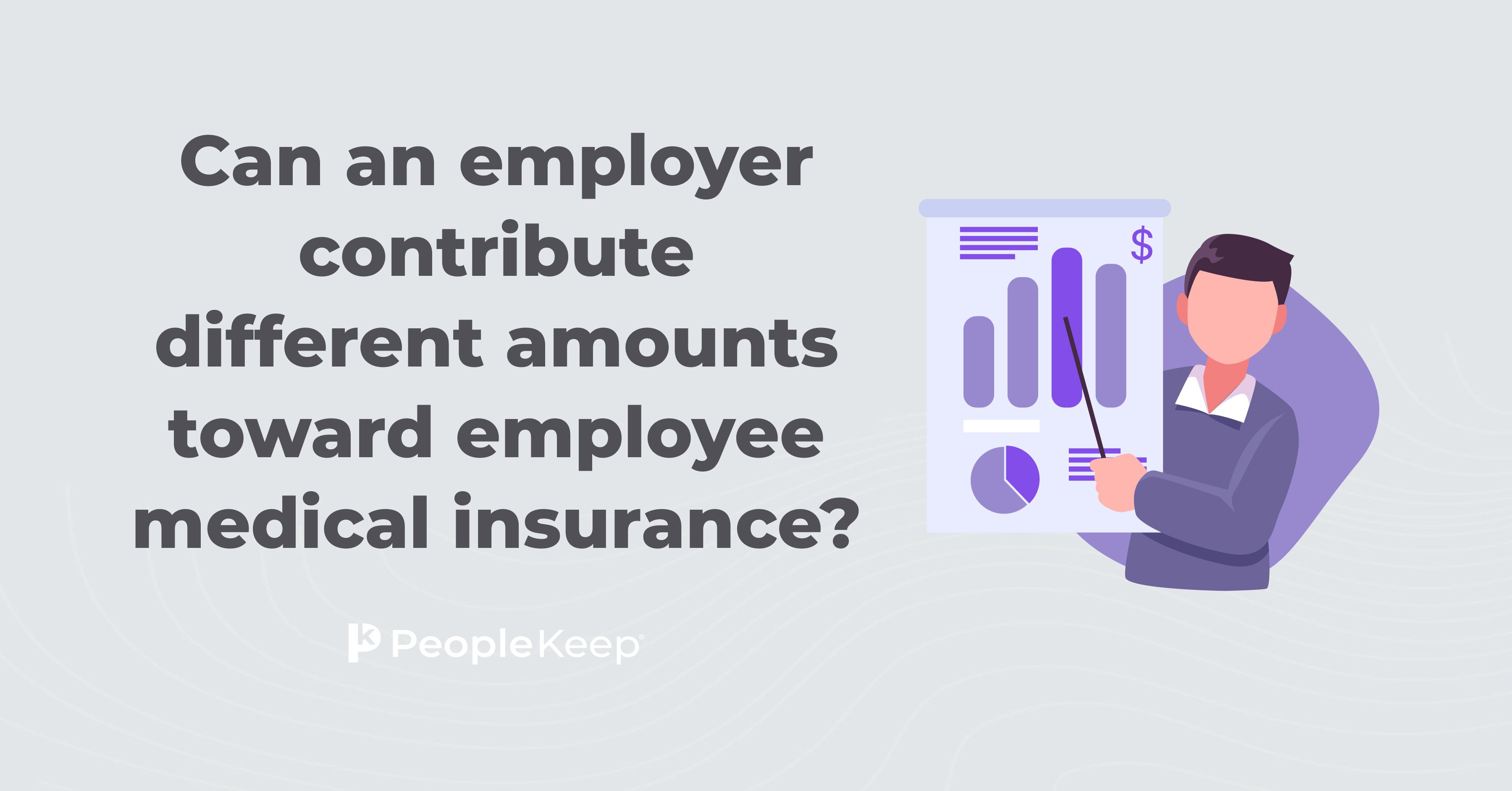What is a 1099 employee?
By Chase Charaba on March 21, 2025 at 8:30 AM
Are you hiring for a short-term project or struggling to fill a permanent role? You may consider hiring an independent contractor. Recently, more workers have become independent contractors due to the growing gig economy and the rise of remote work. Being an independent contractor offers workers greater flexibility, autonomy, and control over their work and personal lives.
While many individuals call independent contractors 1099 employees, they aren't actually employees of the companies they work with. Understanding the difference between employees and contractors is essential for employers and HR professionals to avoid financial penalties or lawsuits due to misclassification. The blog article below reviews the rules you need to know.
In this blog post, you’ll learn:
- The key differences between 1099 independent contractors and traditional W-2 employees.
- How to classify workers under IRS guidelines to avoid legal and tax issues.
- Why businesses hire independent contractors and why workers choose contract roles.
What is a 1099 employee?
A 1099 employee is an independent contractor. The name comes from Internal Revenue Service (IRS) Form 1099, which contract workers must complete to report their earnings. In contrast, regular employees receive a W-2 Form.
An independent contractor is usually a temporary worker who businesses pay to complete specific duties or tasks. These can be long-term projects. But, the understanding is that the organization will no longer employ the contractor on an ongoing basis at the end of the project.
Some common types of 1099 employees are:
- Freelancers
- Consultants
- Self-employed workers
- Sole proprietors
- Gig workers, such as Uber or Lyft drivers and Airbnb hosts
Contractors generally have a written employment agreement or contract with an organization that outlines the terms and expectations of each party. While these contracts are sometimes exclusive, many contractors work for several clients and projects at the same time.
What is the difference between a W-2 and a 1099 employee?
There are two primary types of workers: W-2 employees and 1099 employees. Business owners and HR professionals need to know the difference between W-2 employees and 1099 workers to remain compliant. Let’s break it down.
W-2 employees are workers your company employs directly. Also known as regular employees, W-2 workers must earn at least your state’s minimum wage and are subject to state and federal employment laws. Employers also withhold these employees' Social Security, Medicare, federal income, and FUTA taxes.
Once hired, most employers provide their W-2 workers with the necessary tools and supplies to do their jobs. They’re also eligible for traditional employee benefits and other perks, like health insurance and retirement benefits.
In contrast, contractors work for themselves. They’re responsible for:
- Providing their own tools and equipment
- Setting their schedules
- Paying their income taxes and other applicable forms of self-employment taxes
What qualifies someone as a 1099 employee?
As an employer, you can't classify regular workers, such as full-time employees, as independent contractors. Misclassifying an employee as a contractor can have severe tax and legal consequences, such as the employee suing your company for back pay and benefits eligibility.
The Fair Labor Standards Act (FLSA) created a series of tests to help businesses determine their workers' employee status and avoid employee misclassification.
According to the IRS, three categories can help determine classification:
- Behavioral. Do you or your organization have the right to control what your worker does and how they do their job? This excludes requiring workers to comply with legal obligations or health and safety laws. If you exercise control over their jobs, they’re likely employees, not contractors, depending on the degree of control.
- Financial. Are you in control of monetary business aspects? This includes determining how you pay the employee, whether you reimburse work expenses, and whether you provide tools and supplies. If your organization has financial control, your worker is probably an employee.
- Type of relationship. Are there any written contracts? Do you provide employee benefits? Will you continue your professional relationship with the worker once their job is complete? If you have a written agreement, your worker could be a contractor. However, if you hire them permanently and offer benefits, they might be an employee.
Depending on your answers to these questions, you should be able to tell if your workers are contractors or W-2 employees. The key is to look at the relationship between your organization and your workers.
Sometimes, it can be challenging to classify a position. In these cases, you or your worker can fill out Form SS-81. The IRS will review the form and officially determine your worker's status. However, it’s important to note that the IRS doesn’t rule on a group of workers. Each request only applies to one individual worker.
On January 10, 2024, the U.S. Department of Labor published a new final rule on classifying workers as employees or independent contractors2. These new rules went into effect on March 11, 2024, replacing the 2021 IC Rule. With multiple lawsuits currently challenging this rule, and a new presidential administration, we’ll keep watch on whether the DOL repeals this new rule3.
One of the new rules is the implementation of the economic dependence inquiry. If workers depend on a particular employer for continued employment, though not necessarily income, they are likely employees. But if the individual depends more on their own work, such as from their own freelance business, they're independent contractors.
The final rules also reinstated an economic reality test. The test focuses on a worker’s dependence on an employer and must consider the totality of the circumstances using a six-factor analysis. If the rules revert to the 2021 standards, the DOL will rely on a five-factor analysis.
Why do organizations hire independent contractors?
There are many advantages to hiring a contractor. They’re often more specialized in their fields, allowing you to take advantage of their expertise for specific projects. They also provide greater flexibility because you can hire them for short-term project-based work instead of hiring a traditional employee.
Employers also have less legal risk. This is because you don’t directly hire contract workers, and they usually have their own business and liability insurance. They also aren't eligible for workers' compensation insurance, reducing employer liability.
Another key reason employers hire contractors is because they don’t need to offer these workers employee benefits. Some benefits, like health reimbursement arrangements (HRAs), are only for W-2 employees. However, others, like group health coverage and health stipends, can sometimes support independent contractors.
Even though you’re not legally required to provide your contractors with benefits, doing so can help your organization attract and retain 1099 employees without impacting their independent status. For example, the IRS considers stipends taxable income. So, you can offer them compliantly to your contractors, improving job satisfaction and morale.
Finally, many contractors work remotely. This allows organizations to save money on office space while still running a productive and efficient workforce.
Why do workers choose to become independent contractors?
There are many reasons someone chooses to become a 1099 worker, including:
- Flexible working conditions
- More free time/time off
- More control over who you work for
- Greater income potential
Independent contractors are their own bosses. So, they have control over how and where they work and for how long. They can choose their schedule as long as they deliver the work promised in their contract. This gives them more time to spend with family, pursue their hobbies, or take on extra contract work for other companies.
With a good business strategy, contract workers can earn more than W-2 employees. That's because they’re often highly skilled and in constant demand. By taking on many clients, they can increase their income and diversify their special skills.
Despite all the perks of becoming a contractor, the lifestyle isn't for everyone. There's no safety net for income or job stability, and there's more work involved with doing their own taxes and managing their time. Companies also don't make payroll deductions for these workers. So, contract employees must ensure they have adequate funds to pay their taxes.
Contractors are also responsible for business expenses, travel expenses, and other self-employment costs.
How does a 1099 employee get paid?
When hiring a contractor, you must decide how you'll pay them and how often they’ll receive wages.
The three primary ways to pay contractors are:
- An hourly rate
- By retainer
- On a project basis
Contractors don't receive a salary or overtime wages because the IRS considers that as criteria for employee classification. But, the method of payment can be any way you pay regular W-2 employees, like check, direct deposit, paycard, or your company's payroll. No matter which payment terms you and your 1099 worker choose, draft a written contract outlining the decision.
Since contractors aren't employees, you don't need to do the following:
- Withhold or file taxes on their earnings
- Pay payroll taxes on their wages
- Provide unemployment benefits
- Reimburse business expenses
If you've paid a contractor more than $600 during the tax year, you must report the earnings using Form 1099-NEC 4. Employers previously used Form 1099-MISC to report earnings for contractors5. But, the IRS replaced it with the 1099-NEC Form. Form 1099-MISC now only reports income from rent, legal settlements, or prize winnings.
If your contractor has their own C-corp or S-corp, you don't need to file Form 1099-NEC. But, you must always supply a Form W-9 to your contract workers.
Conclusion
Independent contract workers can play an essential role in your organization. Knowing the distinction between employees and contract workers will help you avoid legal trouble while taking advantage of the flexibility and cost savings of hiring freelance workers.
If you want to attract qualified employees, PeopleKeep by Remodel Health can help! Our HRA administration software lets you set up and manage personalized health benefits that your W-2 employees will love. Plus, our health stipend software solution can help you offer a taxable health benefit that will attract talented freelancers. Contact our benefits specialists to learn more.
This blog post was originally published on October 19, 2022. It was last updated on March 21, 2025.
2. Employee or Independent Contractor Classification Under the Fair Labor Standards Act
3. PlanAdviser - Financial Services Institute, Peers Challenge DOL’s Independent Contractor Rule
Check out more resources
See these related articles

Should you offer benefits to a 1099 employee?
Find out if you should offer benefits to 1099 employees. Learn the differences in benefit offerings between contractors and full-time employees.

What is a lifestyle spending account?
Learn what a lifestyle spending account (LSA) is and how it helps employees cover wellness and lifestyle expenses to improve overall well-being.

Can an employer contribute different amounts toward employee medical insurance?
Employers can contribute varying amounts toward employee medical insurance, allowing for greater customization. Learn more about how this affects benefits.



